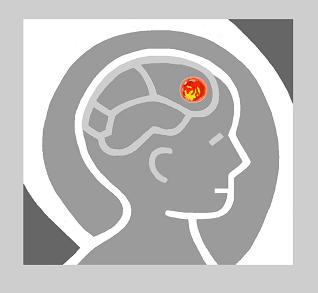Careful Analysis of Study Claiming No Brain Tumor Risk from Childhood Cell Phone Use Shows the Abstract and Conclusions Are Misleading
 A report issued today by L. Lloyd Morgan, B.S., Senior Research Fellow of the Environmental Health Trust, co-authored by Ronald Herberman, MD and Devra Davis, portrays the characterization of the JNCI study’s results by Aydin et al as flawed and misleading to the public. He says these errors should have been picked up at NCI, as well as in the peer review process, as both the Results section and Conclusion are contradicted by the study’s reported results.
A report issued today by L. Lloyd Morgan, B.S., Senior Research Fellow of the Environmental Health Trust, co-authored by Ronald Herberman, MD and Devra Davis, portrays the characterization of the JNCI study’s results by Aydin et al as flawed and misleading to the public. He says these errors should have been picked up at NCI, as well as in the peer review process, as both the Results section and Conclusion are contradicted by the study’s reported results.
They conclude that the study’s results indicating increased risk for brain cancer are of major concern.
ElectromagneticHealth.org is calling on media and the Journal of the National Cancer Institute to correct the misleading reporting, which had been widely distributed to the media, and clarify the risks for childhood brain tumors found in this study.
The abstract and news coverage of the study said there was no ‘exposure-response’, i.e. causal relationship found, based on either the amount of use or the location of brain tumors. However, please note:
- Table 4 of the study, Morgan points out, found a statistically significant more than doubled risk of brain cancer for more than 2.8 years since the first subscription for a cellphone began (OR=2.15, 95% CI=1.07- 4.29) along with 99.9% confidence that the longer the subscription the higher the risk.
- Table 5 found that for when the duration of the cellphone subscription was more than 4 years (the highest exposure) larger than a 3-fold risk of brain cancer was found (OR=3.74, 95% CI=1.19-6.71), and close to a 3-fold risk when the number of cellphone calls was greater than 2,638, the highest exposure (OR=2.91, 95% CI=1.09-7.76)
- The paper also misled saying, “The lack of genotoxicity of mobile phone radiation has been confirmed by experimental animal and laboratory studies” (citing only 2 papers from 1999 and 2001, though there are a multiplicity of papers showing genotoxicity published in the last decade.)
- The Results section did not address the study’s limited statistical power to find consistent results due to the small number of cases in each category, though the authors chose to emphasize the inconsistent results.
- Strange results showing ipsilateral risk (same side of head as where use phone) is smaller than contralateral risk. Morgan explains this anomaly may be the combined result of unknown locations and the definitions of laterality, but not enough data was supplied to fully analyze this finding.
- Data Discrepancies between the Tables and the Text exist, suggesting the results may be misleading
- Missing Data in Table 6 re. Cordless Phone Risk suggests the reported P-trend may have been underestimated.
- Data has been truncated with no explanation or indication of how this has effected the study’s results.
- The authors say “The authors found little or no evidence that mobile phones increase brain tumor risk, and the single positive association could be explained by bias or chance”, when in fact the data show multiple positive associations in Tables 4 and 5.
- Morgan notes that several cell phone companies provided funding for this study.
- No conflict of interest statements from the authors were included, while many of the study’s authors are known to be linked to industry and to other research supporting industry’s interests.
- The risks actually found in this study, as high as a 500% increased risk of brain cancer in children, call for the attention of the authors and the editors of the Journal of the National Cancer Institute.
- Morgan concludes the report appears to have been designed to create doubt that cell phones are a health hazard.
Lloyd Morgan Analysis – “Commentary of CEFALO Risk of Childhood Brain Cancer from Cell Phone Use” (Download PDF)
Public News Service Radio Coverage:
Cell Phone Brain Cancer Study Doesn’t Ring True? Scientists Explain Why
Microwave News Analysis: European Study Reports No Brain Tumor Risk? Among Young Cell Phone Users (7/27/11)
Holistic Primary Care Coverage (link pending)
Download PDF of Is it safe for your child to use a mobile phone? by Magda Havas, PhD., Trent University, Peterborough, Canada
 Please support our work by making
Please support our work by making
a tax-deductible donation.
We are 100% donation-based
and need your support
to educate, communicate and analyze
critical developments in this field.
Thanks so much for your help! Please give
generously. We depend on you.












